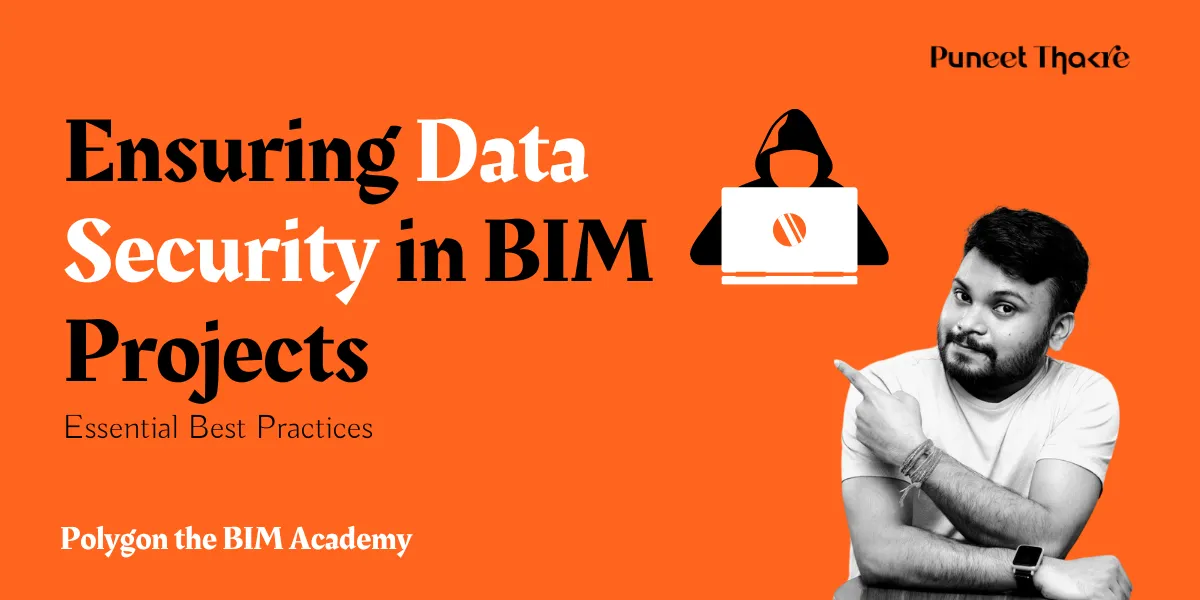#Data Security in BIM Projects
Hello, Architects & AEC Enthusiasts!
If you're diving into the world of Building Information Modeling (BIM), you've got a lot on your plate. Not only are you managing a ton of detailed info about architectural designs, construction specs, and all that jazz, but you're also in charge of keeping all that data safe as houses. That's no small feat, my friend. With cyber threats lurking around every corner, ensuring the security of your BIM projects is more crucial than ever. But don't sweat it! We're here to walk you through the best practices for keeping your BIM data locked up tighter than Fort Knox.
In this cozy chat, we'll explore the nuts and bolts of BIM data protection. From wrapping your data in a digital fortress (also known as encryption) to deciding who gets the keys to the kingdom (hello, access controls), we've got a lot to cover. I'll make sure to keep things light, engaging, and as far from a textbook as possible. By the end of our conversation, you'll feel empowered to shield your BIM projects from those pesky cyber threats that are always lurking around the corner. Ready to dive in? Let's get started!
What is BIM and Why is Data Security Important in BIM Projects?
Understanding the Basics of BIM
Building Information Modeling (BIM) is a collaborative way of working that focuses on creating and managing information about a construction project throughout its lifecycle. It involves the generation and management of digital representations of physical and functional characteristics of places.
Importance of Data Security in BIM
Data security is crucial in BIM projects to protect sensitive data related to construction projects. Proper security measures ensure the confidentiality and integrity of the information within the BIM ecosystem, preventing unauthorized access or data breaches.
Common Security Risks in BIM Projects
Some common security risks in BIM projects include data breaches, insecure data sharing practices, and vulnerabilities in BIM platforms. Addressing these risks requires robust security protocols and regular security audits to safeguard data handling within the BIM systems.
How to Implement Effective Data Security Measures in BIM Systems?
Key Components of BIM Security
Implementing effective data security measures in BIM systems involves incorporating encryption protocols, access controls, and network security mechanisms. These components help in securing sensitive data within the BIM environment.
Cyber Security Best Practices in BIM
Employing cyber security best practices in BIM projects includes training staff on data security awareness, regularly updating security software, and establishing incident response plans for potential security breaches. These practices enhance overall security in BIM projects.
Ensuring Privacy and Security in BIM Collaboration
Collaboration is essential in BIM projects, and ensuring privacy and security during collaboration involves setting clear data sharing protocols, implementing secure communication channels, and enforcing strict access controls to protect sensitive information shared within the BIM ecosystem.
What are the Security Requirements and Best Practices for BIM Projects?
Best Practices for Protecting Sensitive Data in BIM
Protecting sensitive data in BIM projects requires implementing authentication mechanisms, data encryption, and secure data storage practices. Following best practices ensures that sensitive information remains confidential and integral throughout the project lifecycle.
Ensuring Data Integrity in BIM Systems
Data integrity is crucial in BIM systems to maintain the accuracy and reliability of information. Implementing data validation processes, version control mechanisms, and data management protocols helps in ensuring data integrity within the BIM models.
Implementing Secure Data Storage Practices for BIM Projects
Secure data storage practices involve using encrypted storage solutions, maintaining backups of critical data, and restricting access to authorized personnel only. These practices safeguard data stored within BIM platforms from unauthorized access or data loss.
How Does Data Security Impact the Construction Industry's Adoption of BIM?
Challenges of Integrating Security and Privacy into BIM Projects
One of the challenges in integrating security and privacy into BIM projects is balancing data accessibility for collaboration while maintaining data security standards. Finding the right balance is essential to ensure that sensitive information is protected without hindering project collaboration.
The Role of Data Security in Accelerating BIM Adoption
Effective data security measures play a crucial role in accelerating the adoption of BIM in the construction industry. When stakeholders have confidence in the security of their data, they are more likely to embrace BIM technologies and processes for improved project management and collaboration.
What are the Future Trends in Data Security for BIM and Digital Building Projects?
Emerging Technologies for Enhancing BIM Security
Future trends in data security for BIM projects include the integration of blockchain technology for secure data sharing, advanced biometric authentication for access control, and the use of artificial intelligence for threat detection and prevention. These technologies enhance the overall security of digital building projects.
Addressing New Security Threats in Digital Building Projects
As digital building projects evolve, new security threats may emerge, such as targeted cyber-attacks and data manipulation. Addressing these threats requires continuous monitoring of security vulnerabilities, proactive security strategies, and regular security updates to mitigate potential risks within the digital building environment.
Conclusion
And there you have it, my friend—a whirlwind tour of ensuring data security in BIM projects. Remember, in the vast, interconnected world of BIM, keeping your data secure isn't just about deploying the latest tech or fancy tricks. It's about building a culture of security, where everyone plays a part in protecting the digital assets that are so crucial to your projects.
Before we part ways, let me leave you with this thought: securing your BIM data isn't just a one-time deal; it's a continuous journey. As technology evolves and cyber threats become more sophisticated, staying a step ahead is key. But with these best practices in your toolkit and a vigilant eye on the digital horizon, you're well-equipped to keep your BIM projects safe and sound.
Got any questions or thoughts you'd like to share about securing BIM data? Feel free to drop a comment below or reach out. After all, navigating these digital waters is always better with friends. Here's to building safe, secure, and successful BIM projects together!
FAQs
Q: What are the key considerations for ensuring data security in BIM projects?
A: Ensuring data security in BIM projects involves implementing robust measures to protect data from unauthorized access, data leaks, and other security threats. It includes understanding the requirements of collaborative BIM platforms, prioritizing data security, and incorporating an extra layer of security to safeguard sensitive information.
Q: How can BIM 360 contribute to enhancing data security in BIM projects?
A: BIM 360 is a cloud-based platform that offers advanced security features to protect project data. By leveraging BIM 360, project teams can ensure cloud security, manage information securely, and collaborate in a secure environment, thereby enhancing overall data security in BIM projects.
Q: What are the three levels of BIM security?
A: The three levels of BIM security include physical security (controlling access to physical assets), digital security (protecting digital information), and personnel security (managing access rights and privileges). These levels work together to create a comprehensive security framework for BIM projects.
Q: How can construction professionals ensure the security of data in a common data environment?
A: Construction professionals can ensure the security of data in a common data environment by defining clear security requirements for collaborative BIM platforms, restricting access to authorized personnel only, implementing secure data management practices, and regularly assessing and updating security measures.
Q: What are the characteristics related to data security in the context of BIM projects?
A: The characteristics related to data security in BIM projects include the need for encryption of sensitive data, secure storage and transmission of information, role-based access control to data, regular backups to prevent data loss, and compliance with industry standards and regulations governing data security.
Q: Why is it important to prioritize data security in BIM projects?
A: Prioritizing data security in BIM projects is crucial to protect sensitive project information, maintain the trust of stakeholders, comply with data protection regulations, reduce the risk of cyber threats and data breaches, and safeguard the integrity and confidentiality of project data throughout its lifecycle.





